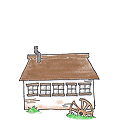
 3
3




 2
2




Learn to dance in the rain.
www.serenityhillhomestead.com

 4
4




Bob Gallamore wrote:Our property is 95% oak and hickory. As we have been clearing areas to build we have been piling the leaves in an area that I isolated using T-posts and chicken wire. The leaves have been decomposing quite nicely, and we turn it from time to time as we pile more leaves in. My Mother in Law swears we are making a big mistake to use all those leaves because the tannin in the oak leaves will turn our garden too acidic to grow anything. She insists we need to burn the leaves and stick to using a "regular" fertilizer like everyone else does. From what I've read, the tannins are leached out by rain and broken down by some micro-organisms and pose no threat to the garden. The biggest issue I can see is that oak leaves are slow to decompose so you have to be patient while they compost.
My MIL won't say anything further about it to me, but she loves to lecture my wife about how I'm going to ruin our garden area if she doesn't stop me from my fool's errand. What say the good folks at Permies?
Works at a residential alternative high school in the Himalayas SECMOL.org . "Back home" is Cape Cod, E Coast USA.
 3
3




Gardens in my mind never need water
Castles in the air never have a wet basement
Well made buildings are fractal -- equally intelligent design at every level of detail.
Bright sparks remind others that they too can dance
What I am looking for is looking for me too!

 2
2




The only thing...more expensive than education is ignorance.~Ben Franklin
Learn to make cheese on a personal sized scale, with our own Kate Downham!
You missed the 2023 Certified Garden Master course? Here's the LIVE Stream
 3
3




 4
4




Visit Redhawk's soil series: https://permies.com/wiki/redhawk-soil
How permies.com works: https://permies.com/wiki/34193/permies-works-links-threads
 2
2




 1
1




 6
6




I don't own the plants, they own me.
 4
4




There's not reason not to get started, but from my experience, full leaves are hard to mix and hard to keep aerobic. I'm not sure grass clippings would help with that part as they are high nitrogen like the chicken poop, but don't add structure. This might be the time to look for fine prunings or pine needles or even wood shavings to add to the mix in an effort to give the pile some structure for air. That said, you have nothing to lose in my opinion if you layer leaves and poop over the winter as the chickens produce it. If you can put the pile in a sunny location you may be able to get a freeze/thaw cycle going that might help break up the leaves? I had a pile last year that got snowed on (we don't get much snow) and I needed to dig into it to add fresh compost and discovered a worm orgy in process - they were *not* impressed by me letting the cold air and light in, but hopefully they appreciated the fresh food I left behind!If it were spring/summer I'd combine the leaves and chicken manure with grass clippings for compost, but this post has me thinking: Why not just leaves and manure? Is there any reason NOT to lay down leaves and sprinkle some manure on top now in early winter?
Visit Redhawk's soil series: https://permies.com/wiki/redhawk-soil
How permies.com works: https://permies.com/wiki/34193/permies-works-links-threads

 9
9




Argue for your limitations and they are yours forever.
 6
6




 5
5




Best serotonin-booster ever: garden time.
 3
3




Visit Redhawk's soil series: https://permies.com/wiki/redhawk-soil
How permies.com works: https://permies.com/wiki/34193/permies-works-links-threads
 5
5




Marly Hornik wrote:I use the brown paper bags full I gather on my way around town like Lego's.
 8
8




Shari Clark wrote:Has anyone tried using leaves for pathways in the garden, similar to how wood chips are used? I am looking for something for weed suppression and pathways.
 3
3




Invasive plants are Earth's way of insisting we notice her medicines. Stephen Herrod Buhner
Everyone learns what works by learning what doesn't work. Stephen Herrod Buhner
 5
5





|
The truth is rarely pure and never simple - Oscar Wilde
FREE Perma Veggies Book! - Learn how to grow the most delicious and nutritious food with the least amount of work.
https://permies.com/t/238620/perennial-vegetables/FREE-Perma-Veggies-Book
|







